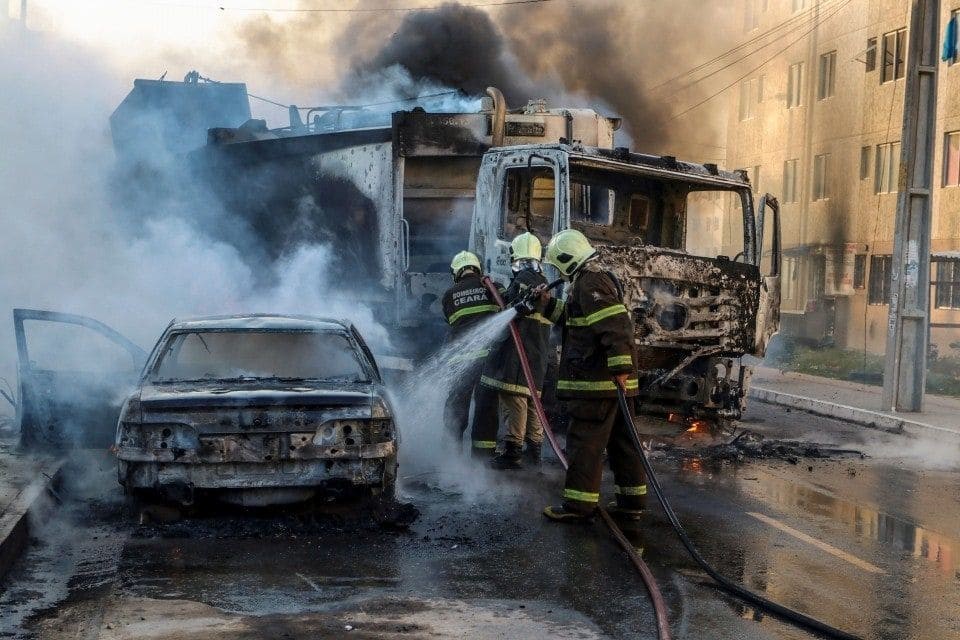The Global Terrorism Index (GTI) 2022 was recently published. Terrorist attacks in Latin America, the terrorist groups that perpetrate the attacks, and the relationship between terrorism and conflict are highlighted within the GTI.
The results of this document can provide valuable information for decision-makers to address terrorist threats in the region and mitigate their impact.
The GTI Report
According to the Institute for Economics & Peace (IEP), the GTI is a comprehensive study that analyzes the impact of terrorism in 163 countries covering 99.7% of the world’s population. This report is compiled using data from Terrorism Tracker and other sources.
The GTI produces a composite score to provide an ordinal ranking of countries in terms of the impact of terrorism. The GTI scores each country on a scale of 0 to 10, with 0 representing no impact of terrorism and 10 representing the highest measurable impact of terrorism.
A notable finding from the 2022 GTI includes that despite the increase in attacks, the impact of terrorism continues to decline. In 2021, deaths from terrorism decreased by 1.2%, while attacks increased by 17%, highlighting that terrorism’s lethality is decreasing.
Two-thirds of countries recorded no terrorist attacks or deaths, while 86 countries recorded an improvement in their GTI score.
The number of deaths has remained roughly the same over the past four years. The GTI also notes that terrorism remains an ongoing threat and is becoming increasingly concentrated, compounding in countries already suffering from violent conflict.
Latin America’s GTI Results
The GTI revealed that there are challenges in Latin America’s terrorism and security. Although some countries have improved compared to 2021, some countries have worsened, which is a risk factor for their national security.
According to the report, five South American countries improved their GTI score, four worsened, and two countries had no change. Additionally, terrorism-related deaths declined by 41% between 2020 and 2021.
“However, the overall level of terrorism remains much higher than a decade ago, with Chile, Peru and Argentina significantly increasing their levels of terrorism in 2021, compared to 2011. In total, there have been 1,835 deaths from terrorism in South America since 2007, the fourth lowest total of any region.”
Also, common actors involved in the terrorist acts include Mapuche extremists and the Colombian National Liberation Army (ELN). In fact, the GTI notes that Colombia has the highest impact of terrorism in the region, a position it has held for the past decade, despite a minor improvement between 2011 and 2021.
Whereas Peru recorded one terror attack in 2021, which killed 16 people. The attack was perpetrated by the Shining Path, a communist terrorist organization.
Finally, Colombia ranks 14th, Chile 18th, Peru 37th, Venezuela 46th and Ecuador 56th in their global GTI rankings.
Implications for the Region
The GTI report provides valuable information to analyze the number of terrorist attacks, impacted regions, casualties, annual changes, trends, and improvements or deteriorations in a country’s status.
Therefore, with the information from the GTI policymakers can make decisions focused on the challenges of their country or region.
In the case of Latin America, countries such as Colombia, Chile, Peru, and Venezuela must implement security policies focused on reducing the impact of terrorism in their states and reducing the capacity of terrorist groups operations.
Countries such as Brazil and Bolivia should continue to implement their existing practices and improve on their current vulnerabilities, in order to not drop in ranking.
Multilateral organizations such as the Organization of American States (OAS) and the Inter-American Development Bank (IADB) should focus their efforts to provide assistance to the most affected countries.
Additionally, some of the countries most affected by terrorism have already taken action. Colombia has taken counter-terrorism measures such as increasing the security footprint in cities like Cali, In Peru, President Castillo urged to prioritize the fight against terrorism and pandemics. Also, the recently elected President of Chile, Gabriel Boric, seeks to improve on counter-terrorism efforts in southern Chile.
In conclusion, Latin America faces threats from various terrorist groups, yet the threat level and impact varies between each country. Ultimately, terrorism is still an ongoing challenge in in Latin America and although efforts have been made to combat terrorism, it continues to affect the lives of countless innocent Latin Americans.
Daniel Felipe Ruiz Rozo, Counter-Terrorism Research Fellow







